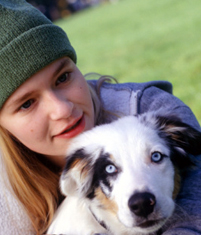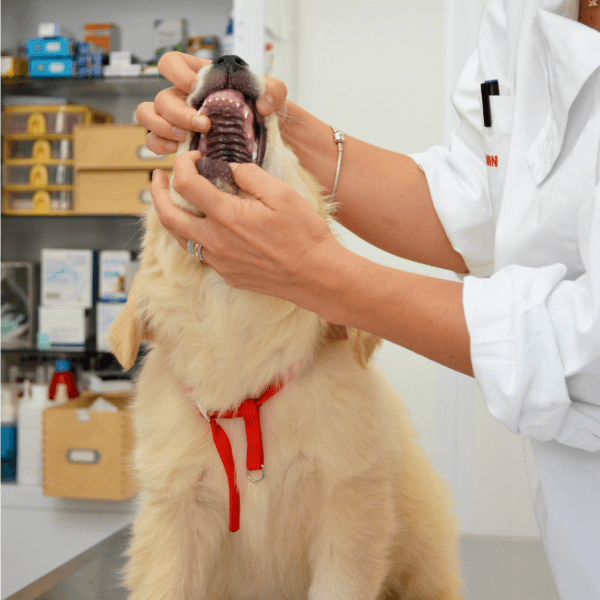Shelter Dog Adoption Process Explained
Share

 Within a year of his wife’s death, William Goryl decided he wanted to adopt a dog from his nearby shelter in Hilton Head, S.C. “I was a little worried because I hadn’t had a dog in 15 years,” says Goryl, a retired business executive. He was also afraid that each and every dog at the shelter would tug at his heartstrings. With guidance from the staff, however, he made the rounds of available dogs until he came upon a reddish short-haired dog of Basenji mix, which had been found walking along a nearby road six months earlier.
Within a year of his wife’s death, William Goryl decided he wanted to adopt a dog from his nearby shelter in Hilton Head, S.C. “I was a little worried because I hadn’t had a dog in 15 years,” says Goryl, a retired business executive. He was also afraid that each and every dog at the shelter would tug at his heartstrings. With guidance from the staff, however, he made the rounds of available dogs until he came upon a reddish short-haired dog of Basenji mix, which had been found walking along a nearby road six months earlier.
“Rusty’s face grabbed me,” says Goryl, who was able to walk the year-and-a-half-old dog for a few minutes. The shelter workers encouraged him to take Rusty home for a weekend. Over that fateful weekend, Goryl discovered the dog’s very pleasant, even-tempered personality. “The more I looked at him, the more I thought I was really lucky,” says Goryl. “He just seemed as friendly as could be.”
Goryl adopted Rusty, and the two have been happy companions ever since. For your shelter adoption to be as successful as Goryl’s, here are some tips to keep in mind:
Consider Temperament
“It’s difficult to get a sense of a dog’s temperament in five minutes,” says Mark Hanks, DVM of Kindred Spirits Veterinary Clinic in Orrington, Me. He advises to spend as much time with adoption candidates as the shelter will allow. “If a dog is standoffish or snappy, it might not have been socialized,” says Dr. Hanks, who adds that most dogs get used to being around humans in the first 20 weeks of life. After that, socialization is much more difficult. Obtain as much information from the shelter as possible concerning the dog’s previous owners to find out if there is a history of behavior problems.
“I remember thinking I’d like to take this dog home,” says Carole Lucia, of Fallbrook, Calif., talking about a part border collie named Riley that she discovered at a shelter operated by a rescue group. “He was chewing on a rawhide toy, and I just gently pulled it away from him to see how he’d react. He just looked at me and wasn’t aggressive at all.” This was important to Lucia and her husband because they had one child and were planning to have more. Riley turned out to be a child-friendly but high-energy dog that needed some training. He is now a beloved member of their family. Lucia, who has successfully adopted many shelter pets, says it’s a good idea to ask shelter workers or volunteers about the temperament of any dog you’re interested in.
If possible, bring every member of your family to meet the shelter dog you want to adopt, to ensure the dog reacts well to everyone. Lucia even brought her other dog to meet Riley to see if the two dogs would get along. They did. Keep in mind that a formerly mistreated dog may react with aggression or fear upon meeting people who somehow remind the dog of its previous abusers.
Understand the Commitment
“More and more shelters are filled with animals because people want to help, but they underestimate their ability — both financially and time-wise — to take care of a pet,” says Dr. Hanks. Don’t adopt a pet on a whim or sudden impulse. If you’re interested in a young dog, remember that this could be a 15-year commitment. For younger dogs, time spent on training is a must.
Another way to make sure all goes well is to look for a breed that fits your lifestyle. If you have children, for instance, look for a dog with a calm, unflappable nature. “Most shelter dogs are mixed breeds,” says Dr. Hanks, “but you can usually see a dominant breed in the mix.” If you live in a small apartment, don’t get a high-energy dog that will bounce off the walls.

Check for Health Problems
Many shelters will spay or neuter dogs before they’re adopted and will check for any health problems. As the new owner, however, it’s wise to take your dog to a veterinarian for a complete checkup soon after adoption. “Some shelter dogs can get kennel cough, which is a virus passed from dog to dog,” says Kelly Dilday, a technician at the Animal Medical Clinic in Portland, Ore. “They might also have some abdominal parasites.”
Many shelters work with local veterinarians. This can be a benefit to you because first visits of recently-adopted shelter dogs may be free or low-cost, Dilday says. Ask your shelter to see if it has such an arrangement. If it does, take advantage of these visits as a way to become familiar with veterinarians in your area and to find one you like.

Make Your New Dog Comfortable
When you bring your dog to your home, establish a routine of mealtimes and regular walks. When walking, be sensitive to your dog’s pace. “It’s best to go slow,” says Dilday. “Always keep your new dog on a leash for walks and don’t force introductions with other dogs right away,” she advises. “Don’t go to dog parks until you get a better sense of your dog’s personality.”
At home, use a crate for your dog, no matter how old the dog may be. “The crate should be big enough so that the dog can sit, lay down and turn around in it. Put down bedding in the crate, along with food and water,” says Dilday. The idea is to give your new dog a cozy place in which to feel safe and comfortable, especially if you have to leave the house to do an errand.
Adopting a dog from a shelter can be hugely rewarding, resulting in a lasting relationship, as it has with Riley and Rusty and their owners. You’ll give yourself the best chance of a happy match by avoiding an impulse adoption, and by taking the time to get to know your potential pet. With a willingness to be a patient, responsible owner, you and your dog will enjoy each other’s company for many years to come.









